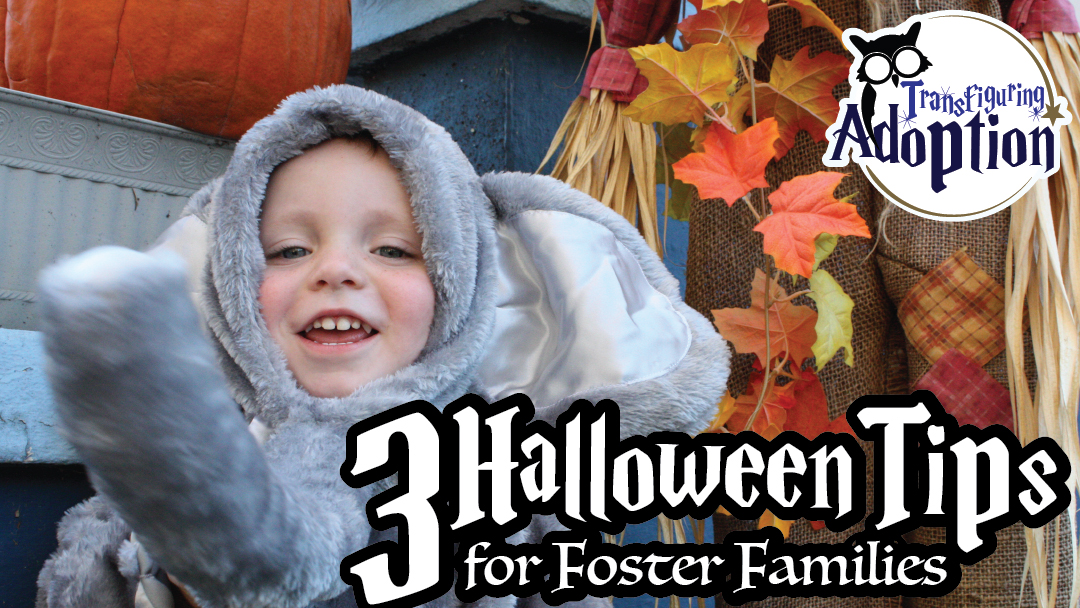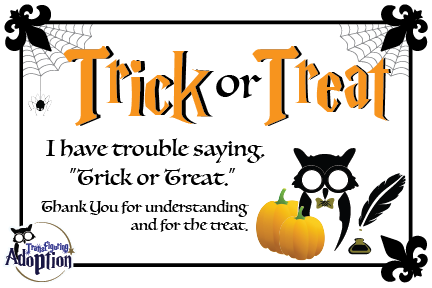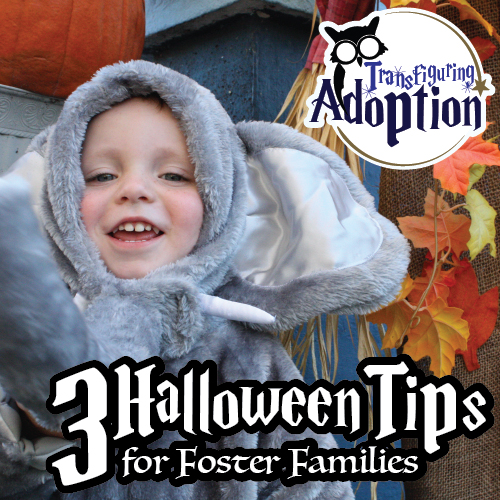A Halloween Tradition – It’s The Great Pumpkin Charlie Brown
I think most of the American public has seen It’s The Great Pumpkin Charlie Brown, right? It’s a Halloween tradition in our house. This cartoon features a boy named Linus, who is convinced that a fictional entity called The Great Pumpkin is going to show up in the middle of a pumpkin patch and shower him with presents. All of the other kids think he is crazy except for Sally. Sally really likes Linus and likes the idea of being rewarded with presents instead of merely getting candy from Trick-or-Treating.
Let’s Prepare to Have Fun
Linus is a reminder to me of our foster children. Sometimes they have an idea of how life is to be run that is skewed. Possibly you have children in your home that were the parents to their siblings and maybe even their parents. If the kiddo(s) had the opportunity to go Trick-or-Treating, it might look very different in your home as compared to their past situation. The differences could be because of their past trauma or it could merely be that you’re a different family that has another way of doing things. Consequently, any differences or variation from their normal can be quite overwhelming.
Why Something Fun Could Be Overwhelming?
- Your foster kiddo isn’t with their biological parent(s)
- They’re trying to learn all sorts of new house rules
- They might have a new school to get used to during the day
- Your family probably eats different foods than they are used to
- This kiddo might be having fun at your home and feel like they are betraying their biological parent(s)
- The same chemicals in the body given off during a stressful situation are given off during a fun and exciting situation; probably the same chemicals that were given off when they experienced trauma in the past
- Trick-or-Treating = Super Fun = Chemicals Release = Remember Past Trauma = Meltdown
3 Tips for Enjoying Your Trick-Or-Treating Adventure
- Tell them what to expect, which helps with anxiousness caused by the unknown
- Do you expect everyone to stick together?
- Are you going to houses or a Trunk or Treat?
- Will there be a lot of people? A lot of noise? Will they get bumped a lot?
(Children with sensory issues especially need to know this) - What do they need to say at the door? Do you expect them to say, “Thank You?”
- Expectations after Trick-Or-Treating are as important as during
- Do you check the candy before letting kids into the bags?
- Do you let the kids eat as much as they want on Halloween night?
- Do you expect your kids to keep their same bedtime?
- Better to call it quits early
I know you probably remember Trick-or-Treating in 7 different neighborhoods for 4 hours when you were a kid. However, as we discussed above, our kids get overwhelmed and tired easily. Set the bar low for the night. Maybe half the Trunk or Treat event or 10 houses. Avoid the meltdown and make it a memorable night. The candy can always be purchased from the store.
Bonus Help for Halloween
I was quite impressed with a printable card that I saw created by several autism programs. These little cards are designed for nonverbal children to handout to people with the words, “Trick or Treat” on them and a brief description of why the child cannot verbally say the words.
While there seems to be a high percentage of foster-adoptive children on the autism spectrum, this idea is nice in general for our kids. Why?!
- It gives them a choice to speak or not while still being cordial and polite
(our kids have had so many choices made for them; why not give them some lost power back.) - It give them a voice.
(these cards give them multiple way to be heard by other people in the community.)



Pingback: Why Something Fun Like Halloween Can be Overwhelming for Foster Kids – CASA of Cumberland, Gloucester and Salem Counties